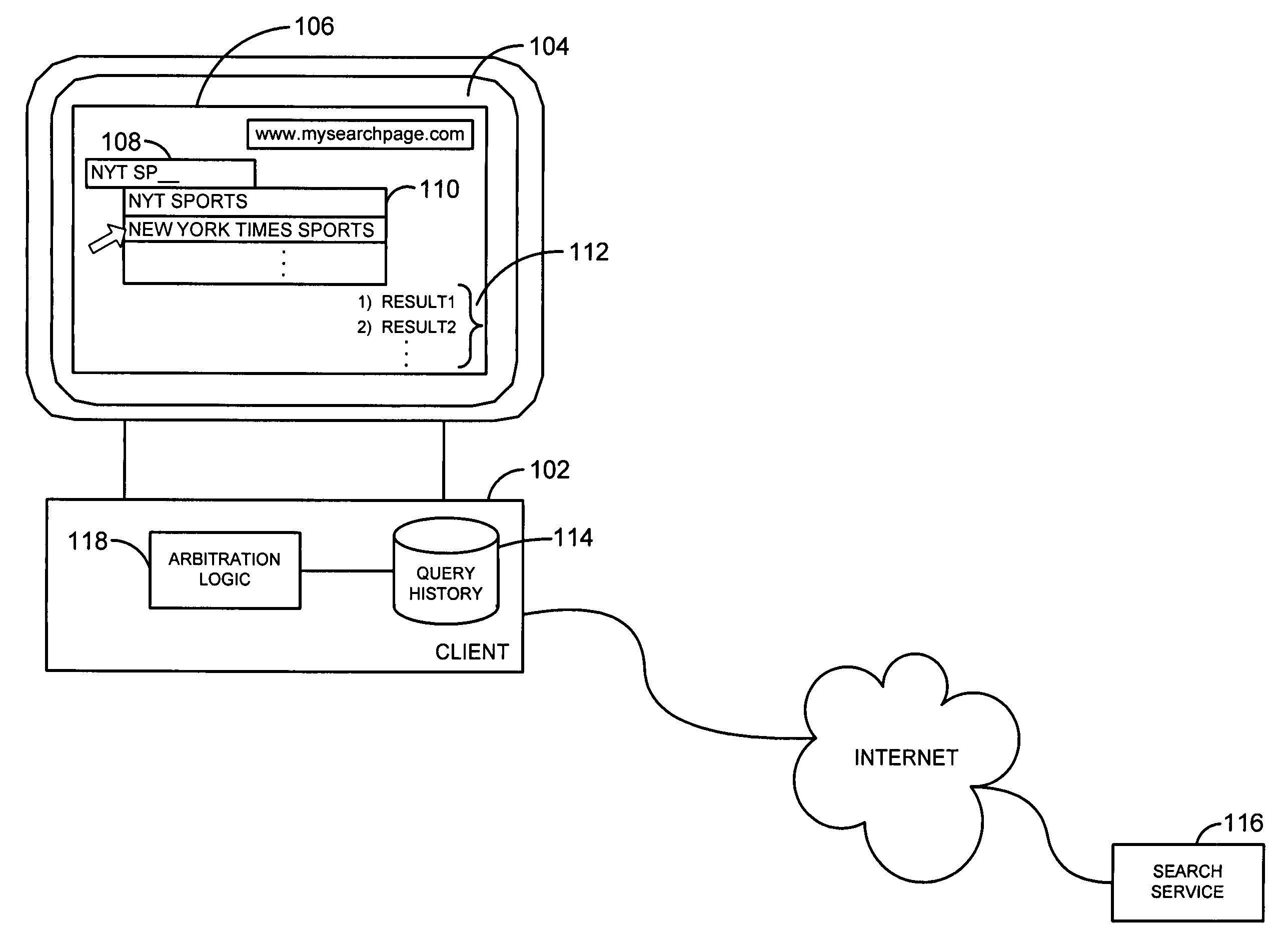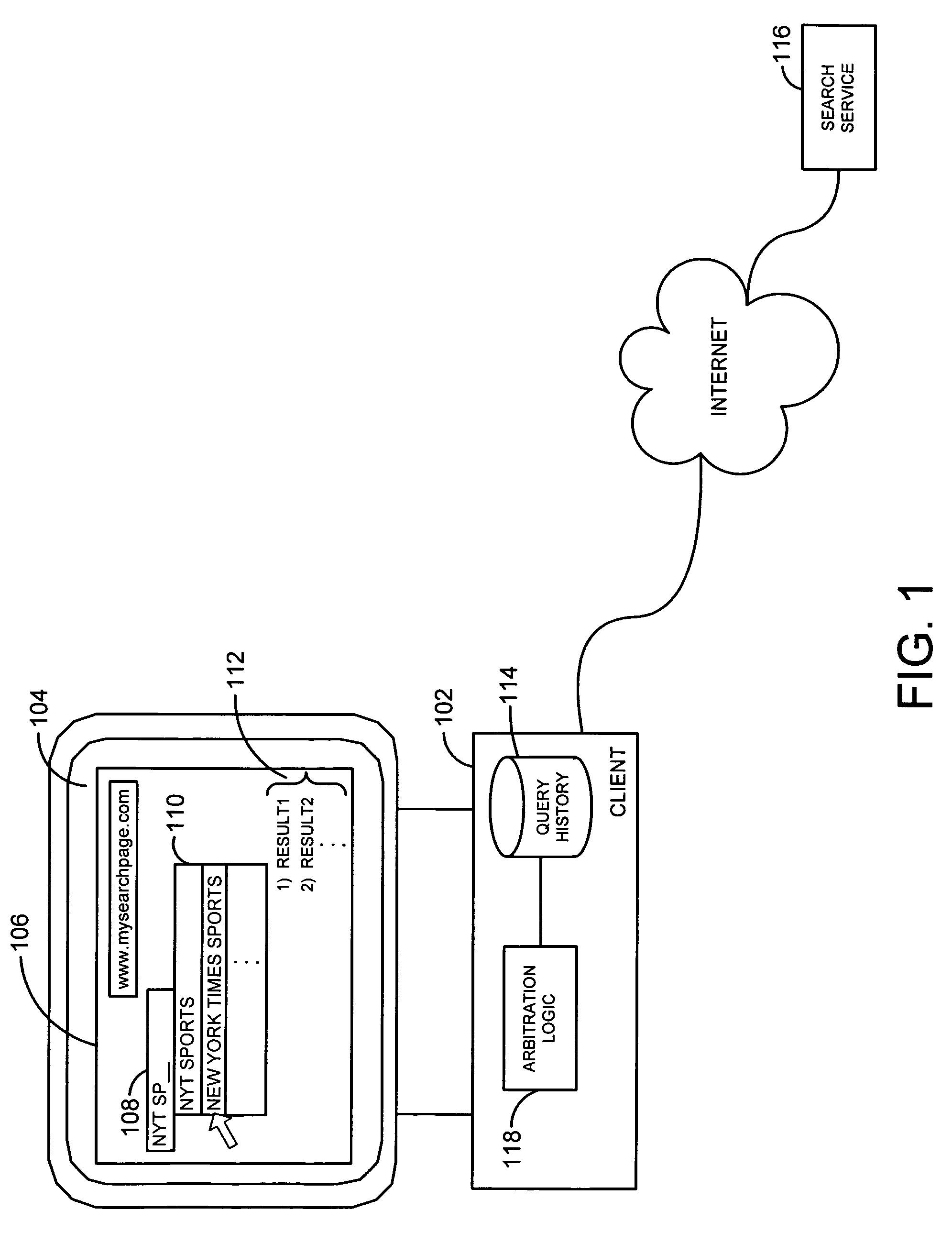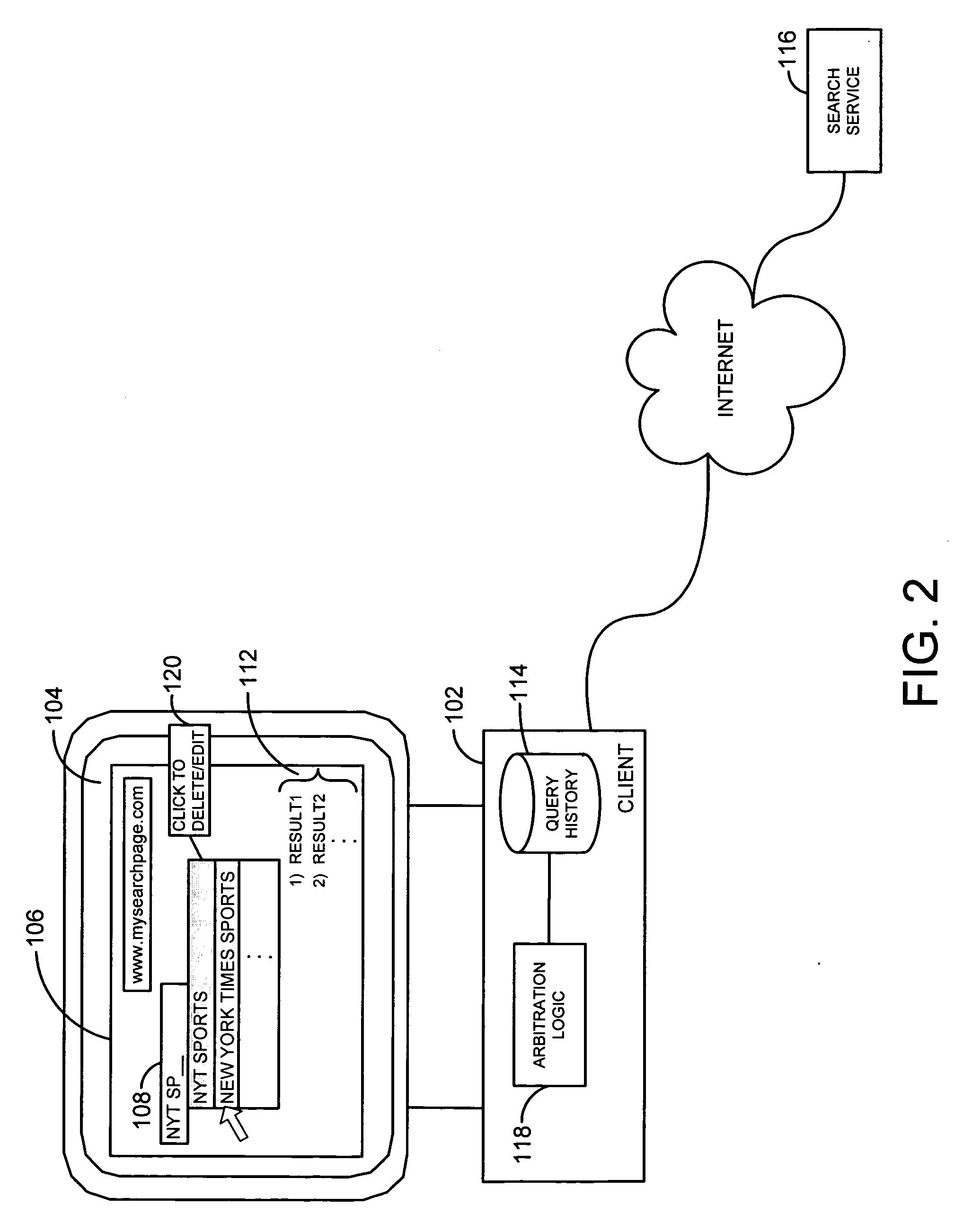System and method for automatic generation of suggested inline search terms
- Summary
- Abstract
- Description
- Claims
- Application Information
AI Technical Summary
Benefits of technology
Problems solved by technology
Method used
Image
Examples
Embodiment Construction
[0014]FIG. 1 illustrates an environment in which a system and method for automatic generation of suggested inline search terms may operate, according to embodiments of the invention. As illustrated in that figure a user may operate a client 102 such as a desktop or laptop computer, a network-enabled cellular telephone, wireless email client, or other client, machine or device to perform various tasks including Web browsing, search, electronic mail (email) and other tasks, applications and functions. The user may interact with those resources via a user interface 104, such as a graphical user interface, command-line user interface, voice-recognition interface or other interface, for example to navigate to search page 106, such as an Internet or other public or private networked search page. In general the user may supply search input 108 such as typed words or other alphanumeric or other data to conduct a search via a search service 116 to receive a set of search results 112 reflecti...
PUM
 Login to View More
Login to View More Abstract
Description
Claims
Application Information
 Login to View More
Login to View More - R&D
- Intellectual Property
- Life Sciences
- Materials
- Tech Scout
- Unparalleled Data Quality
- Higher Quality Content
- 60% Fewer Hallucinations
Browse by: Latest US Patents, China's latest patents, Technical Efficacy Thesaurus, Application Domain, Technology Topic, Popular Technical Reports.
© 2025 PatSnap. All rights reserved.Legal|Privacy policy|Modern Slavery Act Transparency Statement|Sitemap|About US| Contact US: help@patsnap.com



